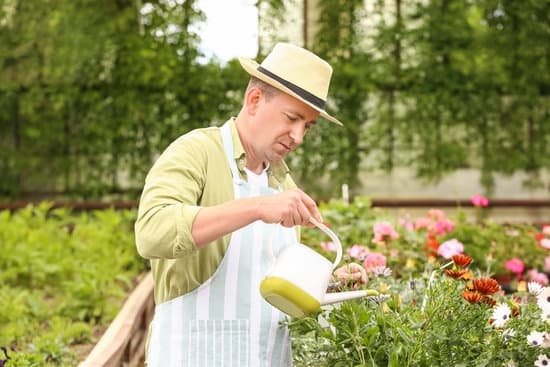Are you looking for some backyard vegetable gardening ideas to kickstart your own homegrown produce paradise? Whether you’re a seasoned gardener or just starting out, there’s something truly rewarding about growing your own vegetables.
In this article, we’ll explore the ins and outs of backyard vegetable gardening, from choosing the right location and essential tools to maximizing space with vertical gardening and companion planting. Get ready to roll up your sleeves and dig into the wonderful world of growing your own food.
When it comes to backyard vegetable gardening, the possibilities are endless. From selecting the best vegetables for your climate to implementing sustainable and organic practices, there’s a lot to consider as you embark on this green-thumb journey.
With the right guidance and tips, you can create a thriving vegetable garden right in your own backyard. So, let’s dive into the fascinating world of homegrown produce and explore how you can turn your outdoor space into a fruitful oasis.
In the following sections, we’ll cover everything you need to know about successful seed starting, proper soil preparation, troubleshooting common gardening issues, and more. Whether you have a large yard or limited space, there are creative layout and design ideas that will help maximize your harvest potential. By the end of this article, we hope to inspire and encourage you to take that first step in starting your own backyard vegetable garden.
Choosing the Right Location for Your Vegetable Garden
When it comes to backyard vegetable gardening ideas, one of the most crucial decisions you’ll need to make is choosing the right location for your garden. The success of your vegetable garden largely depends on the amount of sunlight, access to water, and soil quality in the chosen area. Here are some key factors to consider when selecting a location for your vegetable garden.
Sunlight and Shade
Most vegetables require at least 6-8 hours of direct sunlight each day. Therefore, it’s essential to choose a location that receives ample sunlight. Take note of any large trees or structures that may cast shade on your chosen area. Keep in mind that some leafy greens and herbs can tolerate partial shade, so take this into consideration when planning your garden layout.
Proximity to Water Source
Ensure that your chosen location is within close proximity to a water source. Whether it’s a hose or a nearby spigot, having easy access to water will make watering your plants more convenient and efficient.
Soil Quality
Before committing to a specific location, it’s important to assess the soil quality. The ideal soil for vegetable gardening is loamy soil – a mixture of sand, silt, and clay with plenty of organic matter. Conduct a simple soil test to determine the pH level and nutrient content of the soil. If necessary, you can amend the soil by adding compost or other organic materials to improve its quality.
By carefully considering these factors when choosing the right location for your vegetable garden, you will set yourself up for success and ensure a bountiful harvest from your backyard plot.
Essential Tools and Supplies for Backyard Vegetable Gardening
When starting your own backyard vegetable garden, it’s important to have the right tools and supplies on hand to ensure a successful and fruitful growing season. Here are some essential items that every aspiring backyard gardener should consider adding to their gardening arsenal:
1. Hand Trowel: A small hand trowel is essential for planting, transplanting, and weeding in your vegetable garden.
2. Garden Gloves: Protect your hands from dirt and potential injuries with a durable pair of gardening gloves.
3. Pruning Shears: Keep your plants healthy and tidy with a good pair of pruning shears for cutting back overgrown foliage.
4. Hoe or Rake: A hoe or rake is necessary for breaking up soil, clearing debris, and creating rows for planting.
5. Watering Can or Hose: Ensure your garden receives the proper amount of water with a reliable watering can or hose.
6. Fertilizer: Depending on the needs of your specific vegetables, invest in organic or synthetic fertilizer to provide essential nutrients to your plants.
7. Mulch: Mulch helps retain moisture in the soil, suppress weeds, and regulate soil temperature – all crucial for a successful backyard vegetable garden.
8. Seed Starting Trays/Pots: If you plan on starting seeds indoors before transplanting them outside, invest in seed starting trays or pots to give your plants a head start.
Having these essential tools and supplies will set you up for success in your backyard vegetable gardening endeavors. With the right equipment at your disposal, you’ll be well-prepared to tackle any challenges that may arise as you cultivate your own home-grown produce.
Selecting the Best Vegetables for Your Climate
When it comes to backyard vegetable gardening, one of the most important factors to consider is choosing the right vegetables for your specific climate. Different vegetables thrive in different weather conditions, so it’s essential to select varieties that are well-suited for the temperatures and growing seasons in your area. By doing so, you can increase the chances of a successful and bountiful harvest.
Before deciding on which vegetables to plant in your garden, take the time to research and understand the climate in your region. Consider factors such as temperature fluctuations, average rainfall, humidity levels, and frost dates.
Once you have a clear understanding of your local climate, you can then begin selecting vegetables that are best suited for those conditions. For example, if you live in a hot and dry climate, you may want to focus on heat-tolerant plants like tomatoes, peppers, and eggplant.
Another important aspect to consider when selecting vegetables for your climate is the length of your growing season. Some regions have shorter growing seasons due to early frosts or cooler temperatures, while others have longer warm periods. Understanding this will help you choose vegetables that can mature within your specific timeframe. Additionally, look for varieties that are resistant to common pests and diseases in your area, as this can help ensure the success of your garden.
Proper Soil Preparation and Maintenance
Soil preparation and maintenance are crucial aspects of successful backyard vegetable gardening. The quality of your soil directly impacts the health and productivity of your plants. In this section, we will discuss the importance of proper soil preparation, including nutrients and pH levels, as well as ongoing maintenance to ensure a fertile and thriving garden.
Testing Your Soil
Before planting your backyard vegetable garden, it’s essential to test your soil to determine its pH level and nutrient content. You can purchase a DIY soil testing kit or send a sample to a local agricultural extension office for analysis. Once you have the results, you can make any necessary amendments to optimize the soil for vegetable growth.
Improving Soil Quality
Based on your soil test results, you may need to add organic matter such as compost, aged manure, or peat moss to improve soil structure and fertility. Additionally, you can balance pH levels by incorporating lime to raise acidity or sulfur to lower alkalinity. Regularly adding organic matter and compost will help maintain soil health over time.
Mulching and Weed Control
Mulching is an essential practice for maintaining healthy soil in your backyard vegetable garden. Organic mulch helps retain moisture, suppress weeds, regulate temperature, and improve overall soil structure. Using mulch also reduces the need for frequent watering and minimizes weed growth without the use of harmful chemicals.
By paying close attention to proper soil preparation and ongoing maintenance in your backyard vegetable garden, you’ll create an environment that supports healthy plant growth and bountiful harvests. Remember that healthy soils lead to healthy plants.
Tips for Successful Seed Starting and Transplanting
When it comes to successful seed starting and transplanting for your backyard vegetable garden, there are a few important tips to keep in mind. Whether you’re starting from seeds or transplanting young plants into your garden, proper techniques can make a big difference in the success of your crops.
Choosing the Right Seeds
Before you start planting, it’s essential to choose the right seeds for your climate and growing conditions. Look for varieties that are well-suited to your region and pay attention to the recommended planting times on seed packets. Also, consider starting with a mix of vegetables that grow at different rates so that you can stagger your harvest throughout the season.
Proper Seed Starting and Transplanting Techniques
When starting seeds indoors, use a high-quality seed starting mix and provide adequate light, warmth, and moisture for germination. Once the seedlings have developed their first set of true leaves, they can be transplanted into larger containers or directly into the garden. It’s important to handle them carefully by their leaves (not their stems) to avoid damaging the delicate root systems.
Hardening Off Seedlings
Before transplanting seedlings outdoors, it’s crucial to gradually acclimate them to outdoor conditions in a process known as hardening off. This involves exposing them to outdoor temperatures, wind, and sunlight over a period of 7-10 days. Start with a few hours of exposure each day and gradually increase the time until they are ready for full-time outdoor living.
By following these tips for successful seed starting and transplanting, you can give your backyard vegetable garden the best possible start and set yourself up for a bountiful harvest.
Implementing Sustainable and Organic Practices in Your Garden
When it comes to backyard vegetable gardening ideas, implementing sustainable and organic practices is essential for the health of your garden and the environment. One key practice is using organic fertilizers and compost to nourish your plants. This not only reduces the use of harmful chemicals but also improves soil structure and fertility.
Another important aspect of sustainable gardening is water conservation. Consider installing a rain barrel to collect rainwater for irrigating your garden, or using drip irrigation systems to minimize water waste. Additionally, practicing crop rotation can help prevent soil depletion and reduce the risk of pest and disease problems, all without the need for synthetic pesticides.
Incorporating pollinator-friendly plants into your vegetable garden is also a sustainable practice. These plants attract beneficial insects like bees and butterflies, which play a crucial role in pollination. Avoiding the use of chemical insecticides will help safeguard these important pollinators while promoting biodiversity in your garden.
| Backyard Vegetable Gardening Ideas | Data |
|---|---|
| Organic Fertilizers | Nourish plants, improve soil structure and fertility |
| Rain barrels | Collect rainwater for irrigation |
| Pollinator-friendly plants | Attract beneficial insects for pollination |
Creative Layout and Design Ideas for Small Backyard Vegetable Gardens
When it comes to small backyard vegetable gardening ideas, creativity is key. With limited space, it’s important to make the most out of every inch of your garden. One way to do this is by implementing vertical gardening.
By using trellises, arbors, or wall-mounted planters, you can grow vining vegetables such as cucumbers, peas, and beans without taking up valuable ground space. This not only maximizes your growing area but also adds an interesting visual element to your garden.
Companion planting is another creative design idea for small backyard vegetable gardens. By planting complementary crops together, you can improve soil fertility and naturally repel pests, leading to healthier plants and higher yields. For example, planting basil next to tomatoes can improve the flavor of the tomatoes and deter pests that commonly affect them. Additionally, interplanting quick-growing crops like lettuce between slow-growers such as peppers can maximize your harvest from a small space.
Furthermore, raised bed gardening is a great design idea for small backyard vegetable gardens. Not only does it provide better soil drainage and aeration for your plants, but it also makes it easier to control weeds and pests. Raised beds also allow for easier access for maintenance and harvesting which is especially helpful in small spaces. Plus, they offer a visually appealing way to structure your garden.
| Vegetable Garden Design Ideas | Description |
|---|---|
| Vertical Gardening | Maximize vertical space with trellises and wall-mounted planters. |
| Companion Planting | Planting complementary crops together for improved soil fertility and natural pest control. |
| Raised Bed Gardening | Better soil drainage and easy access for maintenance in small spaces. |
Maximizing Space With Vertical Gardening and Companion Planting
When it comes to maximizing space in your backyard vegetable garden, vertical gardening and companion planting are two great ideas to consider. These methods allow you to make the most of limited space while increasing the productivity of your garden. Here are some creative ideas to help you get started with maximizing space in your backyard vegetable garden:
- Vertical Gardening: Utilize vertical space by growing vegetables on trellises, fences, or even on a wall-mounted garden. This method not only saves ground space but also makes it easier to harvest and maintain your plants. Consider growing vining vegetables like beans, peas, cucumbers, and tomatoes vertically.
- Companion Planting: Pairing complementary plants in close proximity can benefit each other by repelling pests, attracting beneficial insects, and improving overall growth. For example, plant tall crops like corn or sunflowers next to low-growing vegetables such as lettuce or radishes. This way, they can provide shade and support for each other.
In addition to these ideas, using hanging baskets or containers to grow herbs and small vegetables can also help maximize space in your backyard vegetable garden. With a little creativity and planning, even a small backyard can yield a bountiful harvest through vertical gardening and companion planting.
Remember that maximizing space with vertical gardening and companion planting requires careful planning and maintenance. You’ll need to provide adequate support for climbing plants and monitor the spacing between companion plants to ensure their compatibility. With these strategies in place, your backyard vegetable garden will not only be productive but also visually appealing as a result of the creative layout and design ideas implemented.
With some strategic thinking and creativity, even the smallest backyard can become a thriving oasis of fresh vegetables and herbs through the use of vertical gardening and companion planting techniques.
Maintenance and Care Tips for a Bountiful Harvest
Now that you have successfully planted your backyard vegetable garden, it’s important to know how to properly maintain and care for it in order to ensure a bountiful harvest. Here are some essential maintenance and care tips that will help you get the most out of your vegetable garden:
- Regular Watering: One of the most important aspects of maintaining a backyard vegetable garden is ensuring that your plants receive an adequate amount of water. This is especially crucial during hot and dry periods. Be sure to water your plants deeply and consistently to promote healthy root growth.
- Weeding: Keeping your garden free from weeds is essential for the health and growth of your vegetables. Weeds compete with your plants for nutrients and water, so be sure to regularly pull or hoe them out of your garden beds.
- Fertilizing: Providing proper nutrition for your vegetables is key to a successful harvest. Consider using organic fertilizers or compost to promote healthy plant growth. Be mindful not to over-fertilize, as this can lead to excessive foliage growth at the expense of fruit production.
In addition to these basic maintenance tasks, paying attention to the specific needs of each type of vegetable you are growing is crucial for a successful harvest. From staking tomatoes and trellising vining plants like cucumbers, to protecting delicate seedlings from pests, proper care tailored to each plant will ultimately lead to better yields.
Remember that every backyard vegetable garden is unique, so don’t be afraid to experiment with different techniques and methods as you cultivate your own thriving oasis of fresh produce.
Troubleshooting Common Backyard Vegetable Gardening Issues
One of the most common issues that backyard vegetable gardeners face is dealing with pests and diseases that can affect their crops. There are a variety of pests such as aphids, caterpillars, and snails that can damage vegetables, while diseases like blight, powdery mildew, and root rot can also pose a threat to the health of your plants.
To address these issues, it is important to practice good crop rotation, use natural remedies such as neem oil or diatomaceous earth for pest control, and regularly inspect your plants for any signs of disease. Additionally, practicing good soil health and providing adequate airflow between plants can help prevent the spread of disease in your garden.
It’s important to research the specific pests and diseases that are common in your area so you can be prepared to identify and address them early on. By being proactive in managing these issues, you can increase the likelihood of a successful harvest from your backyard vegetable garden.
| Pest/Disease | Treatment/Prevention |
|---|---|
| Aphids | Use insecticidal soap or introduce natural predators such as ladybugs. |
| Powdery Mildew | Avoid overhead watering and ensure proper air circulation around plants. |
| Caterpillars | Handpick caterpillars off plants or use Bacillus thuringiensis (Bt) for organic control. |
Conclusion
In conclusion, backyard vegetable gardening offers a wide array of benefits, from providing fresh and organic produce to promoting sustainability and self-sufficiency. With the right location, tools, knowledge of vegetables, soil preparation, and sustainable practices in place, anyone can create a thriving garden in their backyard. Additionally, creative layout and design ideas such as vertical gardening and companion planting can help maximize space while adding visual appeal to the garden.
For those who are new to backyard vegetable gardening or have been hesitant to start their own garden, it’s important to remember that small steps can make a big difference. By implementing the tips and ideas outlined in this article, individuals can create a successful and rewarding garden regardless of their experience level.
Whether it’s growing herbs on a windowsill or cultivating a full-scale vegetable garden, there are endless possibilities when it comes to creating a sustainable and thriving outdoor space.
Overall, the goal of this article is to inspire and encourage readers to take the plunge into backyard vegetable gardening. From beginners to seasoned gardeners, there is always something new to learn and explore in the world of gardening.
By starting with the basics and gradually expanding one’s knowledge and skills, anyone can enjoy the fulfillment that comes with growing their own food and contributing positively to the environment. So go ahead – put these backyard vegetable gardening ideas into action and start reaping the rewards of your own homegrown produce.
Frequently Asked Questions
What Is a Good Layout for a Vegetable Garden?
A good layout for a vegetable garden should take into consideration the sun exposure, wind direction, and access to water. Raised beds or traditional in-ground planting are common options, but the key is to ensure that each plant has enough space to grow and receive adequate sunlight.
What Vegetables Are Easy to Grow in Backyard?
Some easy-to-grow vegetables for backyard gardens include tomatoes, zucchini, cucumbers, lettuce, peppers, and green beans. These plants thrive in most climates and soil types, making them suitable choices for beginners or those with limited gardening experience.
How Do I Prepare My Backyard for a Vegetable Garden?
To prepare your backyard for a vegetable garden, start by choosing a sunny location with well-draining soil. Clear any debris or weeds from the area and consider testing the soil’s pH levels. Amend the soil with compost or other organic matter to improve its fertility before planting your vegetable crops.

Welcome to my gardening blog! I am passionate about plants and enjoy sharing my knowledge and experiences with others. In this blog, I will write about everything related to gardening, from tips on how to get started to updates on my own garden projects.





